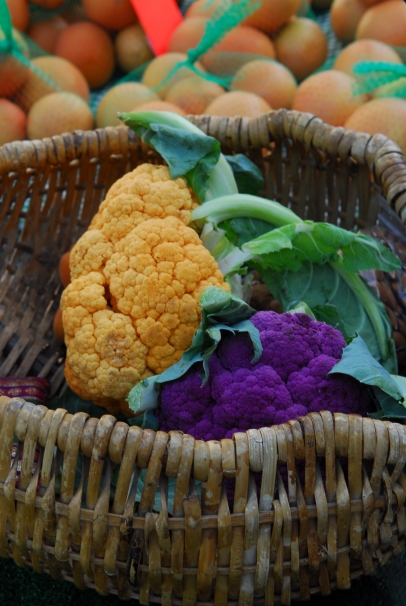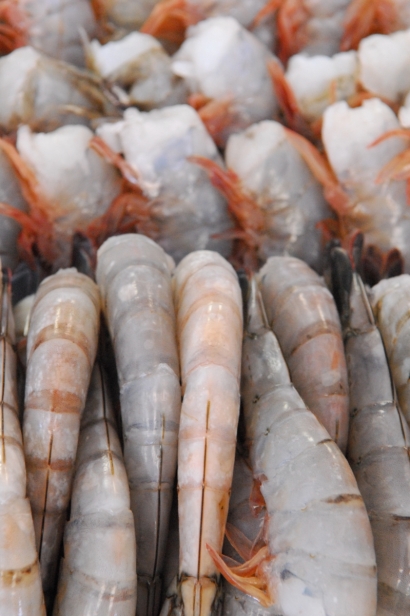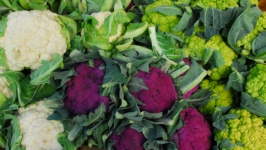From Farm to Table, to Farm to Tummy
Trends are just that—trends. They come and go. Some we welcome with outstretched arms and adopt new ideas, new products, and new ways of living into our daily lives, while others we gladly kick to the curb and wonder, “What was I thinking?” Yea, yea. You know what I mean. But when it comes to food and the culture or even philosophy surrounding what we eat and how we eat—let alone how it gets from the ground to the store to the table and eventually to our tummy—the top trends this year are all ones we hope will stick around for a very long time.
1. We will learn to reuse
Close to 40 percent of all the food in the U.S. becomes waste. Garbage. Thrown away. Stunning, isn’t it? According to the EPA, in 2014 we disposed more than 38 million tons of food waste—the majority of which ended up in landfills, where it breaks down to produce methane, a potent greenhouse gas directly associated with climate change. That’s the bad news, now for the good: consumers and companies are taking note. One organization, New York based Baldor Foods, has even developed easy recipes for using food scraps. Try their tomato sauce made from vegetable peelings and the tops of tomatoes, aka the parts you throw away. You can learn more about the local movement and the newly developed Indiana Food Scrap Initiative on the Indiana Recycling website. And to do your part in 2017, here are some tips from the USDA:
- Reduce food waste by improving product development, storage, shopping/ordering, marketing, labeling and cooking methods.
- Recover food waste by connecting potential food donors to hunger relief organizations like food banks and pantries.
- Recycle food waste to feed animals or to create compost, bioenergy and natural fertilizers.
2. School lunches will become top priority
It’s no secret—America has a weight problem. And though the problem stems from several reasons, many experts agree (as do we at Edible Indy) that improving our children’s nutrition and teaching them good eating habits early can help reduce child obesity. In 2010, the Healthy, Hunger-Free Kids Act set new standards for school meals and allowed the USDA to begin reforming and improving school lunch and breakfast programs. But even with an act of Congress, kids aren’t going to eat something that doesn’t look and taste good yet the desire to bring more salads, fruits, lean proteins and hearty grains into our children’s lives is a priority for all—fortunately there are a number of organizations and individuals alike dedicated to making this happen, sooner than later. Want to learn more? Check out the Indiana Chapter of Action for Healthy Kids—join me and register for their upcoming free webinar on changing the culture of the school cafeteria.
3. People will eat more sustainable seafood
Unless you’ve lived under a rock for the last few years, no doubt you’ve read reports or seen news programs on the benefits of eating more seafood—good for your heart, good for your circulatory system, good for your brain. But, are people heeding the advice and adding seafood to their diets? Yes, and no. According to the annual Fisheries of the United States Report, in 2015 Americans upped seafood consumption by nearly a pound per person from the previous year, making it the largest growth in seafood consumption in 20 years. Unfortunately, most Americans eat only about two thirds of the recommended seven ounces per week. Ready to up your seafood consumption? Hit up local fishmongers at Caplinger’s Fresh Catch Fish Market—not only can you buy seafood for home preparation, but they’ll prepare anything you want, straight out of the case.
4. Coconut will continue its popularity
It used to be when people thought about eating coconut, they thought about macaroons, or Almond Joys, or pina coladas. All some of my personal favorites, but not necessarily the best way to consume, or use, the widely-popular and healthy exotic food. But if you love your coconut, nowadays you can add its milk to coffee, drink its water for a plethora of nutrients or try one of the many new products on the market that turn its sap into “sugar” for a healthy alternative to refined sweeteners. Haven’t tried it yet? Well you should—and it just so happens some of the best products on the market are being made right here in Indianapolis at Skinny & Co. Try their 100% raw coconut oil for cooking and for keeping your skin and hair moisturized this winter. I love it!
5. Cauliflower will reign
First there was quinoa then there was kale … now there’s cauliflower. Yep. That plain little, often overlooked, member of the cabbage family is quietly replacing diet staples like potatoes and rice and has even worked its way into pizza crust. What? It’s true. And from what I hear, even kids like it. Admittedly, I have yet to try the latter, but I do roast it, see our favorite recipe here. on a weekly basis. Bonus, one serving contains 77 percent of your daily vitamin C, and it’s a good source for vitamin K, niacin, magnesium, fiber, potassium and more.
Oh, and Happy New Year everyone.






